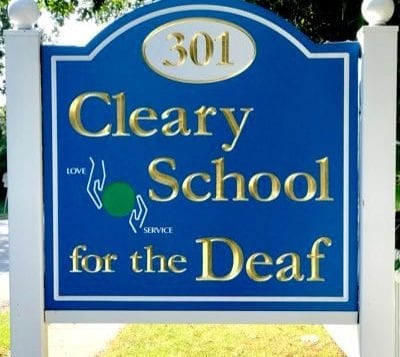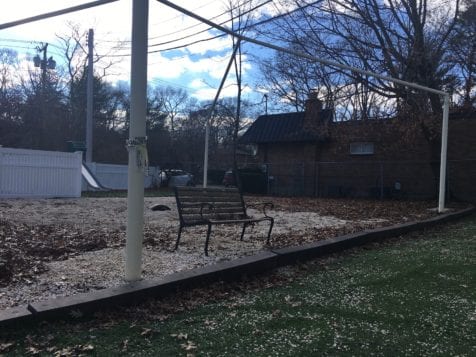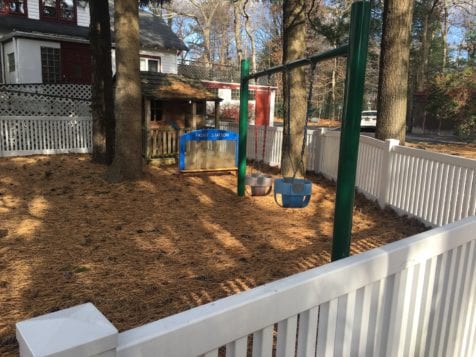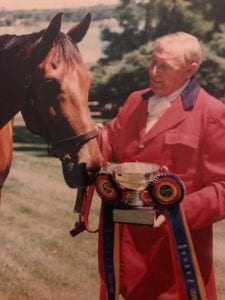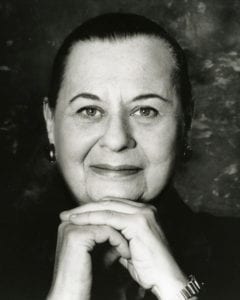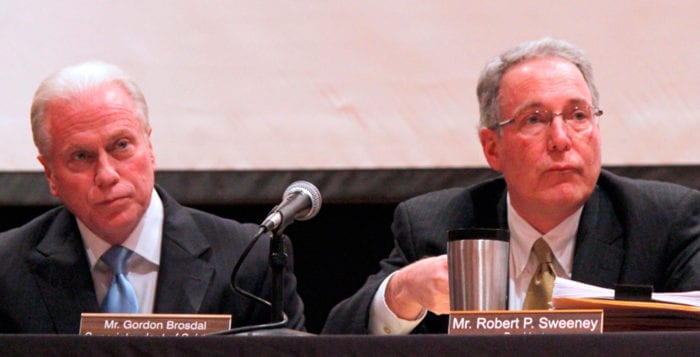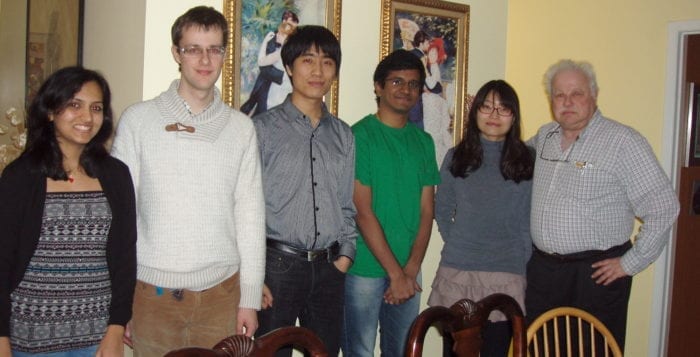A Nesconset school that provides educational opportunities for deaf children is pleading for the public’s help in funding a new playground for its students.
The yard outside Cleary School for the Deaf in Nesconset lies barren, as old split railroad ties square off desolate sections of rock devoid of any slides or swings. Jacqueline Simms, the school’s executive director, said the school was forced to remove its 30-year-old wooden playgrounds in May after an engineer determined they were “inappropriate” and did not meet New York State Department of Education’s safety requirements.
Since then, parents of its deaf students have launched a GoFundMe campaign seeking to raise $100,000 toward a playground.
“These are school-aged children with disabilities who don’t have a playground.”
— Nicole Abbene
“These are school-aged children with disabilities who don’t have a playground,” Nicole Abbene, of Smithtown, said. “They already feel different in regard to their disability, so for them to have a playground would allow them to have the same opportunity as every other child.”
Abbene said her son, Liam, has attended Cleary since he was 3 months old in their Parent Infant Program, designed for children with profound hearing loss from birth through age 3, with their families. Now, at age 4, he’s in a full-day preschool program for children ages 3 to 7 that has approximately 50 enrolled students from 36 school districts across Suffolk County.
“We have a growing enrollment — a huge growing enrollment — that we are meeting with our [state] legislators to see if we can do something about,” Simms said.
The executive director said the state’s funding for the school has not increased proportionally to the influx of students, leaving it tight on funds for capital improvements and the latest technology needed to assist its hearing-impaired children. Simms said she has applied to several grant programs but has yet to be awarded any money.
“I took them outside, and we started to play hide-and-seek. There was no place to hide.”
— Katie Kerzner
“We’ve been trying to do everything to accommodate our population and help with the struggle of not having a playground,” she said.
The school’s staff has set up a small portable jungle gym, a few sand tables and set out tricycles and foot-powered minicars for the children to play on the blacktop. It has created a small play loft in its library, but Principal Katie Kerzner said these don’t fully fill the gap with the opportunities the children would have with an outdoor playground.
“I took them outside, and we started to play hide-and-seek,” she said. “There was no place to hide.”
Kerzner said teaching her preschool children games has been difficult without a playground. In addition, the principal said students’ interaction on playground equipment can provide vital life lessons.
“For children with hearing loss, they need opportunities to practice having those language experiences,” she said. “For our kids it’s all about language. They need more typical, realistic situations to practice their skills.”
“We are all aching to have something for the spring.”
— Katie Kerzner
The GoFundMe campaign launched by Abbene has raised more than $6,000, as of press time, for an age-appropriate playground for children ages 3 to 7. Cleary’s executive director said the school once had three playgrounds divided by age group: birth to age 3, ages 3 to 7, and a third for older school-aged children in its full-time summer programs. The school has received an estimate of $150,000 to replace one playground, according to Simms, and would require significantly more funds to purchase new age-appropriate, handicapped-accessible equipment for all its students.
“We are all aching to have something for the spring,” the principal said. “Our goal is when the kids open that door, after the snow melts, there’s something out there that will facilitate their play.”
In recent weeks, the GoFundMe campaign has captured the attention of some local businesses, who have stepped forward offering aid, and community residents. Simms said one generous individual stepped into the school to donate $150 in person, not sure how to give via the website. While she is “extremely grateful,” Cleary still needs to raise significant funds.
“The playground presents itself as a must,” Kerzner said. “It’s not something on a wish list. It’s a have-to-have.”




